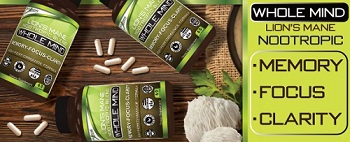Origin of glyptodonts and sloths in the LRT from slender Onychodectes
Small, quick, slender
Early Paleocene Onychodectes (Figs 1, 2) now nests basal to the clade Xenarthra (= glyptodonts, sloths, pangolins and armadillos), a clade that rather quickly thereafter evolved to become larger, slower and robust.
New graphics of the skull (Fig 1) support this interrelationship recovered earlier in 2016 in the LRT, but not elsewhere in the literatuie.
Figure 1. Onychodectes skull compared to Titanoides, Barylambdae, Paramylodon and Glyptodon. Colors added here. Not to scale.
” data-medium-file=”https://pterosaurheresies.wordpress.com/wp-content/uploads/2024/12/glyptodon-skull588.jpg?w=107″ data-large-file=”https://pterosaurheresies.wordpress.com/wp-content/uploads/2024/12/glyptodon-skull588.jpg?w=364″ class=”size-full wp-image-90178″ src=”https://pterosaurheresies.wordpress.com/wp-content/uploads/2024/12/glyptodon-skull588.jpg” alt=”Figure 1. Onychodectes skull compared to Titanoides, Barylambdae, Paramylodon and Glyptodon. Colors added here. Not to scale.” width=”584″ height=”1645″ srcset=”https://pterosaurheresies.wordpress.com/wp-content/uploads/2024/12/glyptodon-skull588.jpg?w=584&h=1645 584w, https://pterosaurheresies.wordpress.com/wp-content/uploads/2024/12/glyptodon-skull588.jpg?w=53&h=150 53w, https://pterosaurheresies.wordpress.com/wp-content/uploads/2024/12/glyptodon-skull588.jpg?w=107&h=300 107w, https://pterosaurheresies.wordpress.com/wp-content/uploads/2024/12/glyptodon-skull588.jpg 588w” sizes=”(max-width: 584px) 100vw, 584px” />
Figure 1. Onychodectes skull compared to Titanoides, Barylambdae, Paramylodon and Glyptodon. Colors added here. Not to scale.
Onychodectes was named by
Cope (1888). Its type is Onychodectes tisonensis. It was assigned to Creodonta by Cope (1888); to Taeniodonta by Lucas et al. (1998); to Conoryctidae by Hay (1902, 1930), and Lucas et al. (1998); and to Taeniodonta by Rook and Hunter (2011) and Williamson and Brusatte (2013).
Seems no prior studies linked Onychodectes to Titanoides, Barylambda and the Xenarthra until the LRT put them together in 2016.
Figure 2. Skeletons of Onychodectes, Glyptodon, Hapalops and Paramylodon.
” data-medium-file=”https://pterosaurheresies.wordpress.com/wp-content/uploads/2024/11/barylambda_glyptodon588.jpg?w=119″ data-large-file=”https://pterosaurheresies.wordpress.com/wp-content/uploads/2024/11/barylambda_glyptodon588.jpg?w=405″ class=”size-full wp-image-90152″ src=”https://pterosaurheresies.wordpress.com/wp-content/uploads/2024/11/barylambda_glyptodon588.jpg” alt=”Figure 2. Skeletons of Onychodectes, Glyptodon, Hapalops and Paramylodon. ” width=”584″ height=”1478″ srcset=”https://pterosaurheresies.wordpress.com/wp-content/uploads/2024/11/barylambda_glyptodon588.jpg?w=584&h=1478 584w, https://pterosaurheresies.wordpress.com/wp-content/uploads/2024/11/barylambda_glyptodon588.jpg?w=59&h=150 59w, https://pterosaurheresies.wordpress.com/wp-content/uploads/2024/11/barylambda_glyptodon588.jpg?w=119&h=300 119w, https://pterosaurheresies.wordpress.com/wp-content/uploads/2024/11/barylambda_glyptodon588.jpg 588w” sizes=”(max-width: 584px) 100vw, 584px” />
Figure 2. Skeletons of Onychodectes, Glyptodon, Hapalops and Paramylodon.
Writing about the Onycyhodectes brain, Napoli et al wrote:
“The main distinguishing feature of its brain is its exaggerated olfactory bulbs, which are among the largest known from any eutherian mammal, suggesting that Onychodectes had an acute sense of smell. However, the animal’s relatively small neocortex indicates that it lacked the capacity for high-level cognition and social behaviors common in modern eutherians. This ‘archaic’ mammal was likely a scratch-digging forager that habitually dug for tough, buried food such as roots and tubers.”
These traits are further evolved and emphasized in later edentates = Xenartha.
Unfortunately, Napoli et al did not make comparisons to Xenarthra.
Figure 4. Comparison of Onychodectes to the basal primate, Notharctus and to extant Nasua, the coatimundi.Vulpavus is in the outgroup clade to the Placentalia1 clade.
” data-medium-file=”https://pterosaurheresies.wordpress.com/wp-content/uploads/2024/11/notharctus.onychodectes588.jpg?w=239″ data-large-file=”https://pterosaurheresies.wordpress.com/wp-content/uploads/2024/11/notharctus.onychodectes588.jpg?w=584″ class=”size-full wp-image-90172″ src=”https://pterosaurheresies.wordpress.com/wp-content/uploads/2024/11/notharctus.onychodectes588.jpg” alt=”Figure 4. Comparison of Onychodectes to the basal primate, Notharctus and to extant Nasua, the coatimundi.Vulpavus is in the outgroup clade to the Placentalia1 clade.” width=”584″ height=”732″ srcset=”https://pterosaurheresies.wordpress.com/wp-content/uploads/2024/11/notharctus.onychodectes588.jpg?w=584&h=732 584w, https://pterosaurheresies.wordpress.com/wp-content/uploads/2024/11/notharctus.onychodectes588.jpg?w=120&h=150 120w, https://pterosaurheresies.wordpress.com/wp-content/uploads/2024/11/notharctus.onychodectes588.jpg?w=239&h=300 239w, https://pterosaurheresies.wordpress.com/wp-content/uploads/2024/11/notharctus.onychodectes588.jpg 588w” sizes=”(max-width: 584px) 100vw, 584px” />
Figure 4. Comparison of Onychodectes to the basal primate, Notharctus and to extant Nasua, the coatimundi.Vulpavus is in the outgroup clade to the Placentalia1 clade.
You’ll note
slender, long, legged, short-necked Onychodectes has similar proportions to Notharctus, the basalmost primate in the large reptile tree (LRT, 2327 taxa). But the two are not closely linked in the LRT. Rather, Onychodectes is a sister to the much larger taxon with much larger fangs, Titanoides, in the LRT. A number of lemur-sized, coatimundi-like taxa are basal forms in the Placentalia1 clade of the LRT.
References
Napoli JG etal (3 co-authors) 2018. A Digital Endocranial Cast of the Early Paleocene (Puercan) ‘Archaic’ Mammal Onychodectes tisonensis (Eutheria: Taeniodonta. Journal of Mammalian Evolutioni. 25:179–195.
Look no further for a Xenarthran ancestor: It’s been Barylambda all along.
The small ground sloth, Hapalops, enters the LRT basal to two extant tree sloths
Source: https://pterosaurheresies.wordpress.com/2024/12/01/origin-of-glyptodonts-and-sloths-in-the-lrt-from-slender-onychodectes/
Anyone can join.
Anyone can contribute.
Anyone can become informed about their world.
"United We Stand" Click Here To Create Your Personal Citizen Journalist Account Today, Be Sure To Invite Your Friends.
Before It’s News® is a community of individuals who report on what’s going on around them, from all around the world. Anyone can join. Anyone can contribute. Anyone can become informed about their world. "United We Stand" Click Here To Create Your Personal Citizen Journalist Account Today, Be Sure To Invite Your Friends.
LION'S MANE PRODUCT
Try Our Lion’s Mane WHOLE MIND Nootropic Blend 60 Capsules
Mushrooms are having a moment. One fabulous fungus in particular, lion’s mane, may help improve memory, depression and anxiety symptoms. They are also an excellent source of nutrients that show promise as a therapy for dementia, and other neurodegenerative diseases. If you’re living with anxiety or depression, you may be curious about all the therapy options out there — including the natural ones.Our Lion’s Mane WHOLE MIND Nootropic Blend has been formulated to utilize the potency of Lion’s mane but also include the benefits of four other Highly Beneficial Mushrooms. Synergistically, they work together to Build your health through improving cognitive function and immunity regardless of your age. Our Nootropic not only improves your Cognitive Function and Activates your Immune System, but it benefits growth of Essential Gut Flora, further enhancing your Vitality.
Our Formula includes: Lion’s Mane Mushrooms which Increase Brain Power through nerve growth, lessen anxiety, reduce depression, and improve concentration. Its an excellent adaptogen, promotes sleep and improves immunity. Shiitake Mushrooms which Fight cancer cells and infectious disease, boost the immune system, promotes brain function, and serves as a source of B vitamins. Maitake Mushrooms which regulate blood sugar levels of diabetics, reduce hypertension and boosts the immune system. Reishi Mushrooms which Fight inflammation, liver disease, fatigue, tumor growth and cancer. They Improve skin disorders and soothes digestive problems, stomach ulcers and leaky gut syndrome. Chaga Mushrooms which have anti-aging effects, boost immune function, improve stamina and athletic performance, even act as a natural aphrodisiac, fighting diabetes and improving liver function. Try Our Lion’s Mane WHOLE MIND Nootropic Blend 60 Capsules Today. Be 100% Satisfied or Receive a Full Money Back Guarantee. Order Yours Today by Following This Link.






